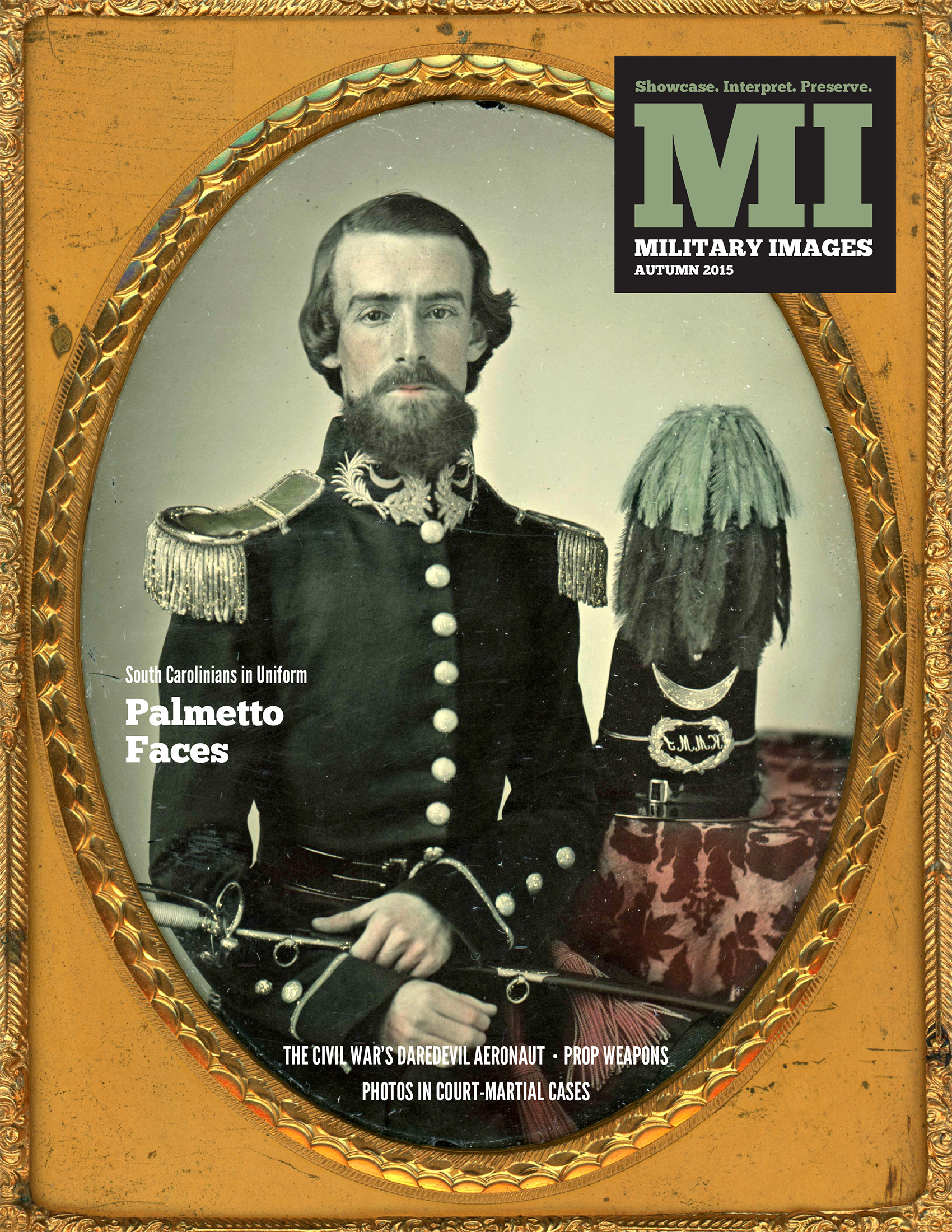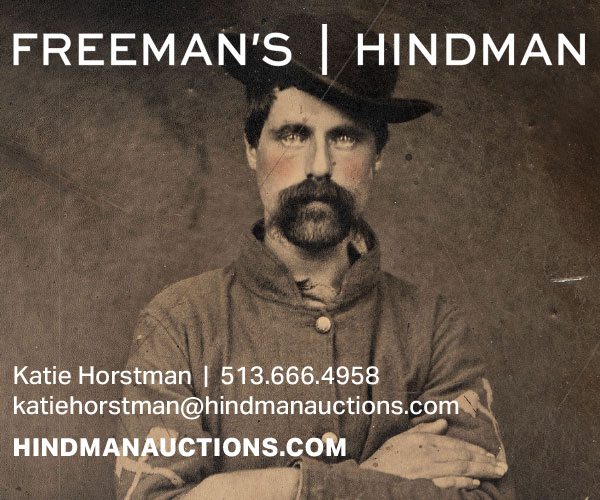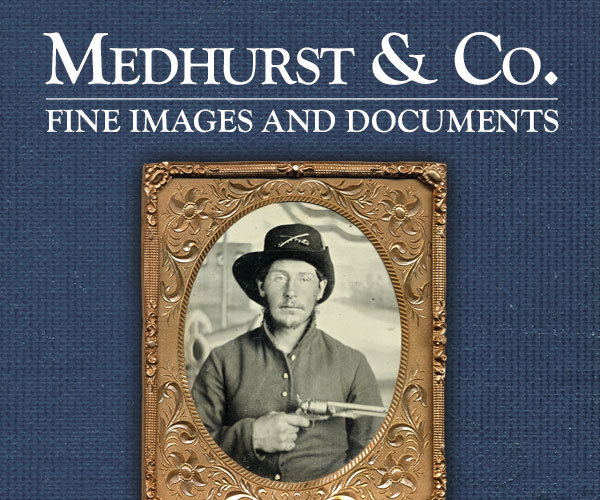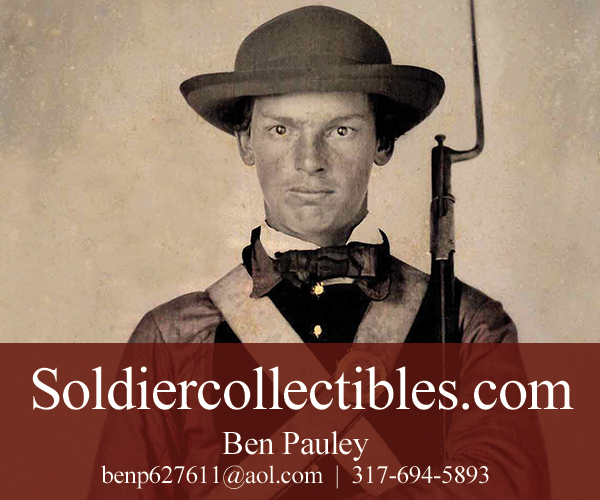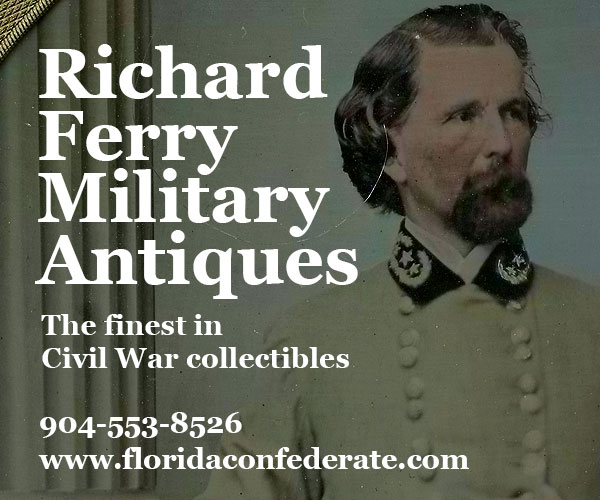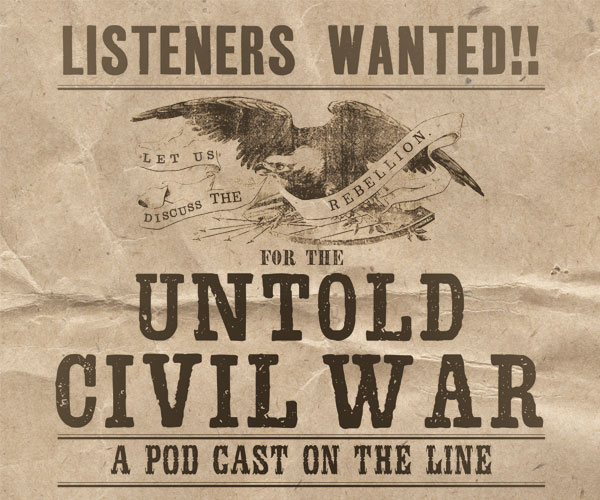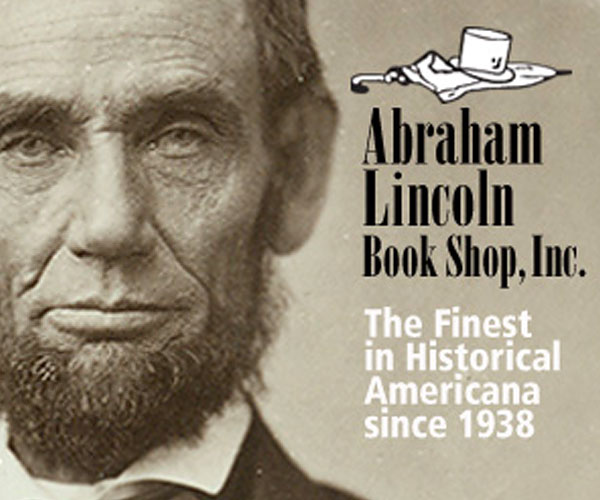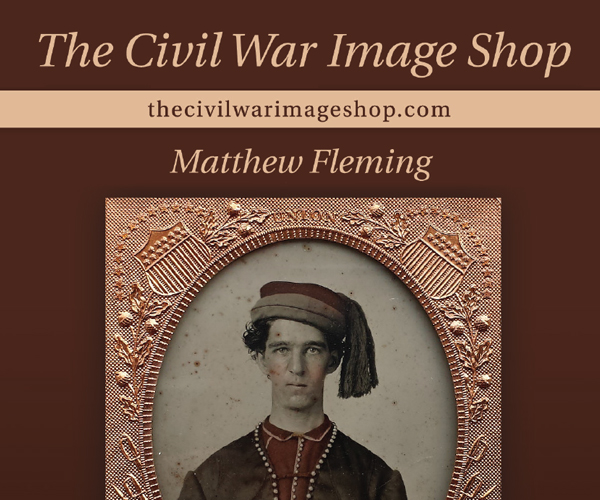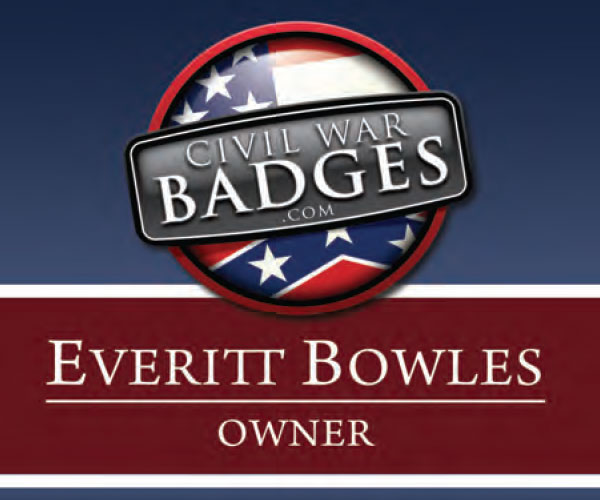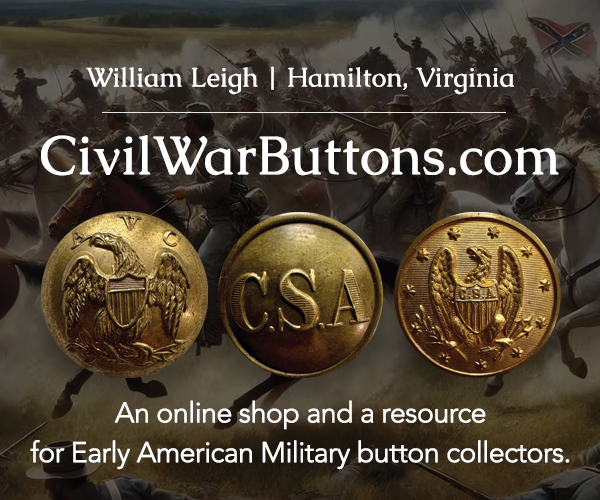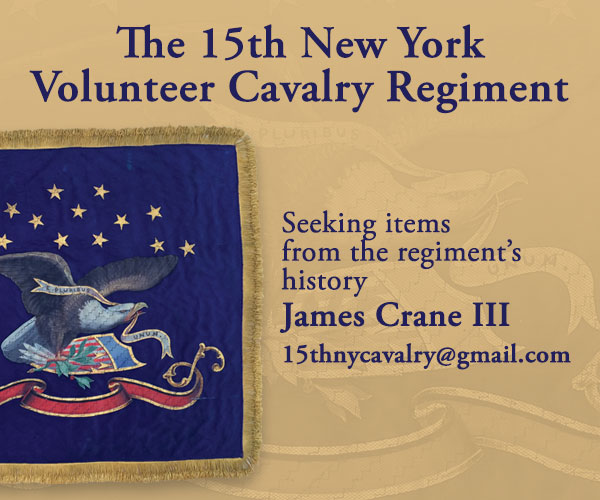 The complete issue
The complete issue
Vol. XXXIII, No. 4
(60 pages)
Print edition: Visit our store to check availability
Digital edition: Visit JSTOR.org to purchase
Subscribe to MI
Explore the MI Archives: Browse | Advanced search | Tutorial
Inside
Cover image
A quarter-plate ruby ambrotype of a second lieutenant is posed with his staff officer sword and plumed dress cap from the Thomas Harris Collection.
Download (free)
Table of Contents (p. 1)
Download (free)
Editor’s Desk (p. 2)
Though it may seem innocuous, the question of whether or not the musket a soldier carries or the uniform he wears actually belonged to him is a hot topic among those who study soldier portraits. At the heart of this debate lay an essential question: What is a prop?
Download (free)
Mail Call (p. 3)
Feedback includes the identification of an image from the Brian Boeve gallery (Winter 2015) as a New Hampshire soldier and a U.S. Colored Infantry officer, an image of a Union soldier from Iowa with an Abraham Lincoln mourning badge pinned to his uniform, kind words about the latest issues of the magazine, and an observation that chevrons with a star were worn by color sergeants in addition to ordnance sergeants.
Download (free)
Passing in Review (p. 4)
If you thought that the Images of America books by Arcadia Publishing trace the history of the country through vernacular photography of small towns, think again. At least 45 Civil War-related volumes are in the series. If they are all as well produced as Remembering Michigan, make room in your library for the set.
Download (free)
Palmetto Faces by Ron Field (pp. 6-17)
A survey of 22 ambrotypes, cartes de visite and tintypes of militia and volunteers from South Carolina. They were the first troops to see service in the defense of the short-lived Republic of South Carolina in 1861 and some of the last to defend the Confederate States of America in 1865. During that time, about 17,000 South Carolinians soldiers died—almost a third of its male white population of fighting age.
Love Found and Lost by Kevin D. Canberg (pp. 18-21)
154 years after war killed a budding romance between a New Hampshire boy on his way South to fight the war and a Pennsylvania farm girl began at a train station, a chance discovery brought their portraits together.
Photo Sleuth by Kurt Luther (pp. 22-25)
In “Revealed: The Identity of an Officer in an Iconic Group Portrait,” Luther describes his journey to determine the name of the white officer pictured in a lithograph of African American soldiers at Camp William Penn outside Philadelphia, Pa. The lithograph is based on a photograph that was sold by antiques dealer James Spina to an unknown collector in the 1970s. The image has not been seen since.
“Glory to Stand Upon Some Lofty Pinnacle” by Katharina Schlichtherle (pp. 26-29)
Jesse Sharpe Barnes was killed in action as he led his company in the 4th North Carolina Infantry against a redoubt during the Battle of Seven Pines. on May 31, 1862. The journey of the 23-year-old captain from political turmoil to death on a Virginia battlefield is the story of a young man changed by the instability of the times.
Armed to the Teeth? The Use of Prop Weapons in Civil War Studio Photography by Katelyn Brown (pp. 32-36)
“Few people would dispute the accepted fact that battlefield photographers of the Civil War sometimes included props—even human beings—in their photographs. Alexander Gardner famously moved corpses in his photographs at Gettysburg, and Thomas C. Roche posed his black assistant in several shots around Petersburg. As this was common practice in the field, who is to say that the studio portrait of the fierce-looking Civil Warrior armed to the teeth did not include props?” While obvious instances of props exist, a more challenging question to analyze involves the use of weapons as props.
Antebellum Warriors (p. 37)
A second lieutenant who graves the cover of this issue was an instructor at the King’s Mountain Military School in Yorkville, S.C. His identity is not known, though an examination of surviving photographs of officers who served at the school suggests that the officer went on to become one of the Confederacy’s best generals.
Mistaken Identity? Early Use of Photographic Evidence in Two Court-Martial Case for Desertion by Elena Colón-Marrero (pp. 38-40)
Two court-martial cases that arose at the end of the Civil War—one in Albany, N.Y., and the other in Springfield, Ill.—reveal how some litigants relied on more than the spoken word to determine identity. The cases of Simon Burke and William Gemmill, both tried in September 1865, used photographs as a key method to identify suspected deserters.
The Honored Few (p. 41)
Amidst the roar of battle at Trevilian Station, Va., on June 11, 1864, 1st Lt. Noble Delance Preston of the 10th New York Cavalry lay in a plowed field bleeding profusely. His courage ultimately resulted in his receipt of the Medal of Honor.
America’s Champion Aeronaut in the Civil War by Sarah Hopkins (pp. 42-44)
Bavarian-born John H. Steiner was a daredevil aeronaut who barnstormed across the United States before the war. In the Union army, he conducted the only successful balloon observations in the western theater.
From the “Star” to the “Shenandoah” by Ronald S. Coddington (pp. 46-47)
It may be fairly stated that John Grimball of Charleston, S.C., served from the beginning to the end of the war. On Jan. 9, 1861, he was part of the garrison of Fort Moultrie that drove the Union steamer Star of the West away from Charleston Harbor. He was also aboard the Shenandoah during her final cruise that ended on Nov. 6, 1865.
Uniforms & History by Michael J. McAfee (p. 48)
In “Cap Insignia: Topping It Off,” McAfee notes that U.S. Army Regulations of 1861 were very specific on what trim should be placed on the 1858 forage cap, and yet no one seemed to follow the rules.
Stragglers (pp. 49-51)
Unique images contributed by MI readers include Corp. Jacob Nicholas Haupt of the 7th Maryland Infantry, who was captured in The Wilderness and sent to Andersonville Prison; a light artilleryman with a seldom seen sword knot; and four cartes de visite of William K. Taylor of the 50th Pennsylvania Infantry.
Tintype Stares and Regal Airs by Isidora Stankovic (pp. 53-57)
In this essay, Stankovic examines the impact of Civil War portrait photography and soldier memorialization. “In this total war, the volunteer fighters secured a new individualized identity for the common soldier through portrait photographs.”
The Last Shot (p. 59)
A post mortem image of a gaunt Union soldier is a grim reminder of the devastation of disease in the ranks of both armies.

